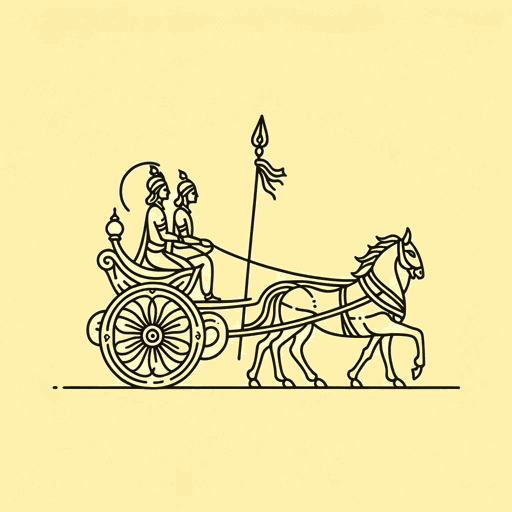59 pages • 1 hour read
Swami Prabhavananda, Transl. Christopher IsherwoodBhagavad Gita
Nonfiction | Scripture | Adult | Published in 1972A modern alternative to SparkNotes and CliffsNotes, SuperSummary offers high-quality Study Guides with detailed chapter summaries and analysis of major themes, characters, and more. For select classroom titles, we also provide Teaching Guides with discussion and quiz questions to prompt student engagement.
Introduction
Teacher Introduction
Bhagavad Gita: The Song of God
- Genre: Religious; Spiritual; Classic Hindu Scripture
- Originally Written: Estimated to date back to the 2nd century BCE
- Translation Published: The translation by Christopher Isherwood and Swami Prabhavananda was published in 1866.
- Reading Level/Interest: Lexile 1770L; College/Adult
- Structure/Length: Approximately 671 pages
- Central Concern: The Bhagavad Gita is a philosophical and spiritual dialogue between the prince Arjuna and the god Krishna, who serves as his charioteer. Taking place on the battlefield just before the start of a great war, the Gita addresses complex issues of duty, righteousness, and the moral struggles of Arjuna. This translation aims to present these teachings in a manner accessible to a Western audience, highlighting the Gita's profound spiritual and ethical insights.
- Potential Sensitivity Issues: Religious and philosophical themes; discussions about duty, war, and morality in a spiritual context.
Swami Prabhavananda, Author
- Bio: Born 1893; died 1976; Indian philosopher and monk of the Ramakrishna Order; founder of the Vedanta Society of Southern California; worked extensively to spread Vedanta and Indian spiritual ideas in the West
CENTRAL THEMES connected and noted throughout this Teaching Guide:
- Battle and War
- The Search for Enlightenment
- The Binary Nature of Existence
STUDY OBJECTIVES: In accomplishing the components of this Teaching Guide, students will:
- Develop historical and religious understanding regarding the principles of Hinduism that structure Arjuna and Krishna’s dialogue throughout the text.

